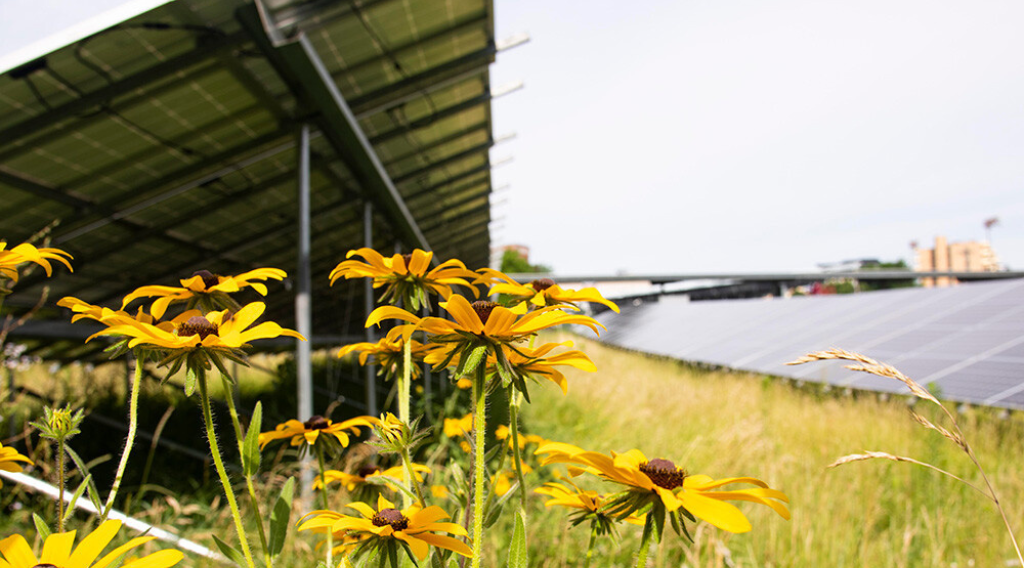 If you google “oil reserves” (or natural gas reserves, or coal reserves, or uranium reserves) you will be inundated with data sources, such as the resource map below. There is a whole industry of companies and agencies who track and measure our country’s traditional energy fuel reserves.
If you google “oil reserves” (or natural gas reserves, or coal reserves, or uranium reserves) you will be inundated with data sources, such as the resource map below. There is a whole industry of companies and agencies who track and measure our country’s traditional energy fuel reserves.
On the other hand, if you search for information about solar energy reserves, your result is considerably different.
We have no standard means and very little data for measuring the economic value of our solar energy resources.

If you ask your local or regional officials where the valuable economic resources are located in your community, you will hear about agricultural soils, timber stands, mineral and aggregate resources, developable land, water sources, and natural systems that support tourism and quality of life. If you ask your local officials about the community’s solar reserves, you will likely get a blank stare.
Similarly, most local communities have taken deliberate steps to enable development of their local resources, to become “shovel-ready” for development that brings jobs, improves tax base, and improves quality of life.
Most communities have not, however, made themselves “shovel-ready” for solar development. Local policy, regulation, public investment, and programmatic initiatives frequently end up creating barriers, rather than opportunities, for solar development.
Solar-Ready Community Best Practices
The Great Plains Institute is working with cities and counties in four states – Minnesota, Wisconsin, Illinois, and Iowa – to develop “solar-ready” local policies, development codes, and permit processes. Under the DOE-funded Grow Solar initiative, GPI has developed a “solar-ready community” set of best practices that cities and counties can use to prepare for and take advantage of a rapidly growing market for solar energy.
The solar-ready best practices include five categories of action that local governments typically use in community development activities:
- Comprehensive Plans that describe the community’s solar resources and encourage appropriate solar development opportunities;
- Development Regulations that explicitly address solar development in its varied forms, from residential rooftop development to community solar gardens and solar farms;
- Local and State Permitting Processes that are predictable, transparent, well documented, and consistent with other communities;
- Public Sector Investment in the community’s solar resources; and
- Local Programs to overcome market barriers and enable private sector solar development.
Direct assistance to cities and counties includes recommending Comprehensive Plan amendments or new policy language, zoning text amendments to enable solar development from the rooftop to the solar garden, and creating solar permit checklists that enable local building code staff to standardize submittal requirements and inspection processes.
Why Local Governments?
Solar energy is now cost-competitive with retail electric rates in many areas of the country, including the Midwest. Since the advent of the modern solar industry in the 1970s energy crises, the cost of a solar electric panel has come down by more than 99%; panels on the wholesale market that cost almost $80 per watt of capacity now can be purchased for less than 60 cents per watt. Even more remarkable, solar panel prices have declined by over 85% just in the last eight years. Along with reductions in panel price, the industry has seen a revolution in the other components of a solar installation, such as lightweight engineered racking systems that are virtually invisible on a roof and that allow for a residential rooftop installation to be completed, in many cases, in a single day. While panel prices have declined only slightly over the last three years, installed costs continue to decline.
The U.S. Department of Energy (DOE) SunShot program assessed all the cost components of the solar energy industry to see whether the solar industry could become an economically self-sustaining part of the national energy supply portfolio. The answer was a resounding “yes!”, but, with an important caveat.
Unlike most other forms of electric generation solar energy is “local;” it is subject to local development controls, local permitting, local market development, and the solar resource is owned by local land owners.
One of DOE’s critical findings was that local governments are an essential partner in creating an economically self-sustaining solar energy industry.
Source: Tracking the Sun VIII, Lawrence Berkeley National Lab, 2015
With funding from DOE’s SunShot program and separate funding from the State of Iowa, GPI is providing assistance to over two dozen small and large communities across four states. Our “beta” communities are as small as Marine on St. Croix (Minnesota), to mid-size regional centers like Eau Claire (WI), Cedar Rapids (IA), and Urbana (IL), to metropolitan area communities including Schaumburg (IL), Rosemount (MN), Des Moines (IA) and Duluth (MN)/Superior (WI). The program will continue to provide technical assistance and provide workshops and technical trainings for local governments until 2017. 


